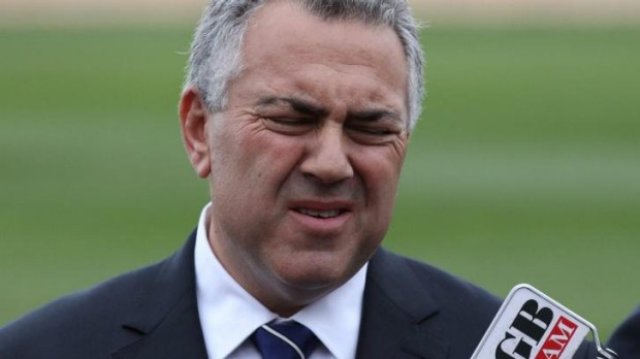
At the G20 meeting held in Brisbane last December, Treasurer Joe Hockey unveiled his blueprint for the Australian economy. It came in the form of a document grandiosely titled The Comprehensive Growth Strategy.
This was Australia’s contribution to the G20’s strategy to raise their overall economic output by 2% over the next five years.
So it must have come as a surprise to cigar-smoking Joe that when the IMF and OECD looked at the fine print of his document and reached for the abacus they concluded that it would, if implemented, add only 1.2% to economic output.
Hockey’s blueprint had two main features: a $5 billion incentive for state and territory governments to privatise $28 billion of their publicly owned assets; and improving workforce participation.
Given the recent electorate decisions on privatisation in Queensland and Victoria, and the looming election in NSW where the vast majority oppose privatisation, flogging off $28 billion in public assets seems a long way from realisation.
The other strand of Hockey’s growth strategy, increasing workforce participation, was a con job from the start.
Even though there have been data collection problems with the Australian Bureau of Statistics (ABS) Labour Force Survey, the official January unemployment figures released on February 12 show unemployment rising from 6.1% to 6.4%.
This is the highest rate since 2002 and translates to 795,000 people chasing fewer than 150,000 job vacancies. The workforce participation rate was 64.8%. Had it been increased to the most recent high of 65.9% reached in November 2010, the official unemployment rate would have been 7.8%.
The Reserve Bank of Australia’s Statement on Monetary Policy released this month projected a cycle peak in unemployment of close to 6.5% in late 2016. If their prediction of the cycle peak time is correct, it will be considerably more than 6.5% on present trends.
Job creation is falling further behind natural labour force growth at the same time as full-time employment is decreasing.
The survey showed that 28,100 full-time jobs were lost in January. With continuing retrenchments in the mining and manufacturing sectors, particularly in the auto-assembly and auto-components sub-sectors, this seems certain to continue throughout this year and next.
The centrepiece of Hockey’s plan to improve workforce participation rested on the proposal of making younger unemployed people wait six months before receiving unemployment benefits.
This is still stalled in the Senate, but if it were to be implemented it would “improve” workforce participation by manipulating the official unemployment rate. The figure that would be trotted out would be those on unemployment benefits.
This is an old trick learned from Margaret Thatcher. Her government changed the definition of unemployment 30 times — and each time it produced a lower level of official unemployment.
Making people wait six months for unemployment benefits would not lower unemployment because it would not create a single job. What it would do is condemn young people to penury, increase homelessness and exacerbate other social problems.
The other policy that it rested on was to discourage people from going to University by massively raising the cost of doing so.
This “price signal” of neoliberal economic theory is designed to force those excluded from tertiary education onto the labour market without access to unemployment benefits. Once again, they would be removed from the official unemployment figures with not a single new job created.
But for those worried about the social consequences of an economy moving from stagnation towards recession, help is at hand.
The Social Services Minister Scott Morison has a plan to cut the cost of social welfare by getting three target groups back to work — young men, women raising families, and older women.
Fifty per cent of men aged 15 to 19 are not in the workforce and neither are 20% of men aged 20-24. Only 60% of women whose youngest child is aged from three to five is employed in Australia compared to 65% across OECD countries. The number of women over 65 who are in the workforce has risen by only 5 percentage points, from 4% to 9%, in the last ten years.
Morrison’s plan, the details of which are yet to be released, is said to be a mixture of “carrots and sticks” just like his policy on refugees. Those in his three target groups would do well to think about getting organised.
They might start by reminding him that if all of the job vacancies were filled tomorrow there would still be 645,000 people unemployed through no fault of their own. This is a massive failure of public policy — shameless in its attempt to shift the burden of failure from the Abbott government to its victims.
Like the article? Subscribe to Green Left now! You can also like us on Facebook and follow us on Twitter.